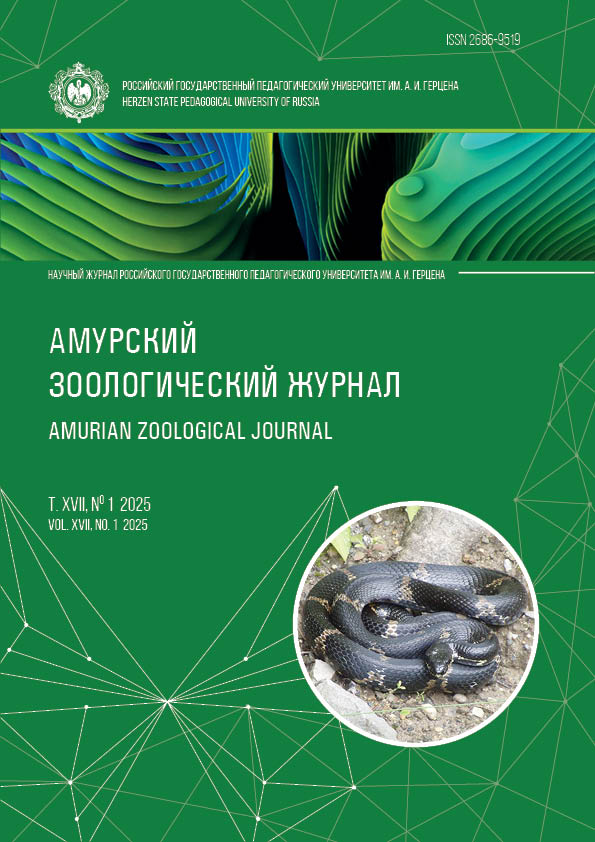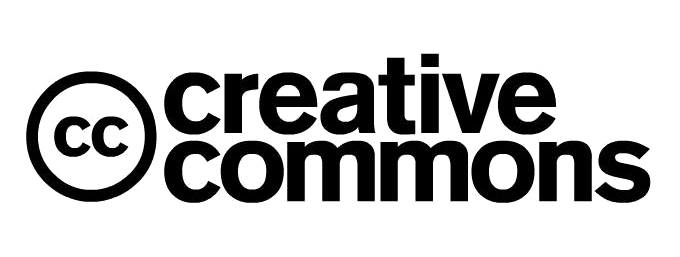Productivity of Kavkaz-2 silkworm strain on artificial diet IPS-1 with synthetic amino acid supplementation
DOI:
https://doi.org/10.33910/2686-9519-2025-17-1-146-162Keywords:
silkworm (Bombyx mori), artificial diet, amino acids, developmental dynamics, viability, productivity parameters, reproductive performanceAbstract
This study presents data on rearing the Kavkaz-2 silkworm strain (Bombyx mori) using our patented artificial diet (IPS-1) supplemented with synthetic amino acids to enhance biological parameters, silk productivity, and reproductive performance. The research demonstrated that incorporating specific amino acid concentrations into IPS-1 (0.5 % L-glycine, 0.7 % L-alanine, 0.8 % L-serine, 1.1 % L-tyrosine, and 0.3 % L-methionine) resulted in: 1) reduced rearing duration by shortening the fifth instar larval stage by 2 days; 2) increased fifth instar larval viability (99.6 %); 3) improved cocoon weight (4.2 %), average cocoon shell weight (9.2 %), and silk yield (5.0 %); and 4) enhanced reproductive parameters including clutch size (5.5 %), average egg weight (1.4 %), and total clutch weight (5.4 %) compared to traditional mulberry leaf feeding.
References
Altman, G. H., Farrell, B. D. (2022) Sericulture as a sustainable agroindustry. Cleaner and Circular Bioeconomy, vol. 2, article 100011. https://doi.org/10.1016/j.clcb.2022.100011 (In English)
Bekkamov, Ch. I., Turg’unboeva, N. A., Allanazarova, G. A. et al. (2023) The effect of the amount of basic amino acids contained in the silk liquid synthesized in the silk gland of the mulberry silkworm on the properties of silk fiber. European Journal of Interdisciplinary Research and Development, vol. 13, pp. 41–47. (In English)
Borthakur, I., Kaushik, A. (2022) Seri-Biotech: A step towards the future. In: M. Hazarika, N. Borah (eds.). Current Research and Innovation in Entomology. Vol. 1. Kota: Vital Biotech Publ., pp. 185–198. (In English)
Chen, X., Ye, A., Wu, X. et al. (2022) Combined analysis of silk synthesis and hemolymph amino acid metabolism reveal key roles for glycine in increasing silkworm silk yields. International Journal of Biological Macromolecules, vol. 209, pp. 1760–1770. https://doi.org/10.1016/j.ijbiomac.2022.04.143 (In English)
Gautam, M. P., Singh, D. K., Singh, S. N. (2022) A review on silkworm (Bombyx mori Linn.) an economic important insect. Biological Forum — An International Journal, vol. 14, no. 4a, pp. 482–491. (In English)
Giora, D., Marchetti, G., Cappellozza, S. et al. (2022) Bibliometric analysis of trends in mulberry and silkworm research on the production of silk and its by-products. Insects, vol. 13, no. 7, article 568. https://doi.org/10.3390/insects13070568 (In English)
Gupta, S. K., Dubey, R. K. (2021) Environmental factors and rearing techniques affecting the rearing of silkworm and cocoon production of Bombyx mori Linn. Acta Entomology and Zoology, vol. 2, no. 2, pp. 62–67. https://doi.org/10.33545/27080013.2021.v2.i2a.46 (In English)
Hăbeanu, M., Gheorghe, A., Dinita, G., Mihalcea, T. (2024) An in-depth insight into the profile, mechanisms, functions, and transfer of essential amino acids from mulberry leaves to silkworm Bombyx mori L. pupae and fish. Insects, vol. 15, no. 5, article 332. https://doi.org/10.3390/insects15050332 (In English)
Ito, T., Inokuchi, T. (1981) Nutritive effects of d-amino acids on the Silkworm, Bombyx mori. Journal of Insect Physiology, vol. 27, no. 7, pp. 447–453. https://doi.org/10.1016/0022-1910(81)90095-0 (In English)
Jaiswal, K. K., Banerjee, I., Mayookha, V. P. (2021) Recent trends in the development and diversification of sericulture natural products for innovative and sustainable applications. Bioresource Technology Reports, vol. 13, article 100614. https://doi.org/10.1016/j.biteb.2020.100614 (In English)
Kishore, S. M., Sowmya, K., Krishnaveni, A. et al. (2024) Revolutionizing sericulture: New trends in biotechnological applications and by-product utilization. Journal of Scientific Research and Reports, vol. 30, no. 9, pp. 397–410. https://doi.org/10.9734/jsrr/2024/v30i92363 (In English)
Klimova, A. A. (1990) Metodika provedeniya eksperimental’nykh vykormok tutovogo shelkopryada. Metodicheskie rekomendatsii po shelkovodstvu [The method of conducting experimental silkworm breeding. Methodological recommendations on sericulture]. Inozemtsevo: Rosshelkstantsiya Publ., 17 p. (In Russian)
Laz, R. (2010) Effects of methionine and tryptophan on some quantitative traits of silkworm, Bombyx mori L. (Lepidoptera: Bombycidae). University Journal of Zoology, Rajshahi University, vol. 28, pp. 15–19. https://doi.org/10.3329/ujzru.v28i0.5280 (In English)
Murugesh, K. A., Aruna, R., Chozhan, K. (2021a) Influence of amino acids on the economic characters of silkworm, Bombyx mori L. Madras Agricultural Journal, vol. 108, no. 7-9, pp. 376–382. https://doi.org/10.29321/MAJ.10.000516 (In English)
Murugesh, K. A., Chozhan, K., Aruna, R. (2021b) Enhancement of larval and cocoon traits of silkworm, Bombyx mori L. through the application of amino acids. Journal of Entomology and Zoology Studies, vol. 9, no. 1, pp. 2198–2203. (In English)
Nicodemo, D., Oliveira, J. E., Sedano, A. A. (2014) Impact of different silkworm dietary supplements on its silk performance. Journal of Materials Science, vol. 49, no. 18, pp. 6302–6310. https://doi.org/10.1007/s10853-014-8355-4 (In English)
Ramesh, V., Pushparaj, K., Ganesh, P. P., Rajasekar, P. (2018) Nutritional supplementation of amino acid l-serine on silkworm Bombyx mori (L.) larvae in relation to growth rate and silk production. Research Journal of Life Sciences, Bioinformatics, Pharmaceutical and Chemical Sciences, vol. 4, no. 5, pp. 301–312. https://doi.org/10.26479/2018.0405.24 (In English)
Saad, M. S. I., Helaly, W. M. M., El-Sheikh, A. E.-S. (2019) Biological and physiological effects of pyriproxyfen insecticide and amino acid glycine on silkworm, Bombyx mori L. Bulletin of the National Research Centre, vol. 43, no. 1, article 145. https://doi.org/10.1186/s42269-019-0181-z (In English)
Saha, S., Kumar, P., Raj, S. et al. (2022) Sericulture: Management and practices of mulberry silkworm. International Journal of Pharmaceutical Research and Applications, vol. 7, no. 2, pp. 35–46. (In English)
Shivkumar, Kumar, N. B., Ravindra, M. A. et al. (2020) Supplement of amino acids on mulberry leaf influence the cocoon yield and silk production in the temperate region of Jammu & Kashmir. Research Journal of Agricultural Sciences, vol. 11, no. 1, pp. 87–91. (In English)
Song, W. T., Zhu, F. F., Chen, K.-P. (2021) The molecular mechanisms and factors affecting the feeding habits of silkworm (Lepidoptera: Bombyxidae). Journal of Asia-Pacific Entomology, vol. 24, no. 4, pp. 955–962. https://doi.org/10.1016/j.aspen.2021.08.010 (In English)
Tajamul, I., Shabir, A. B., Firdous, A. M. et al. (2023) Feeding of different mulberry varieties and its impact on silk gland of silkworm, Bombyx mori L. Biological Forum — An International Journal, vol. 15, no. 1, pp. 488–492. (In English)
Tatsuke, T., Tomita, S. (2024) Differential expression of fibroin-related genes in middle silk glands is induced by dietary differences in a strain-dependent manner in Bombyx mori. Journal of Insect Physiology, vol. 158, article 104695. https://doi.org/10.1016/j.jinsphys.2024.104695 (In English)
Yin, X., Zhang, Y., Yu, D. et al. (2023) Effects of artificial diet rearing during all instars on silk secretion and gene transcription in Bombyx mori (Lepidoptera: Bombycidae). Journal of Economic Entomology, vol. 116, no. 4, pp. 1379–1390. https://doi.org/10.1093/jee/toad102 (In English)
Downloads
Published
Issue
Section
License
Copyright (c) 2025 Viktor G. Evlagin, Elena G. Evlagina, Evdokia F. Leinweber, Evgeny N. Yumatov, Uliya A. Gazaryan

This work is licensed under a Creative Commons Attribution-NonCommercial 4.0 International License.
The work is provided under the terms of the Public Offer and of Creative Commons public license Creative Commons Attribution 4.0 International (CC BY 4.0).
This license permits an unlimited number of users to copy and redistribute the material in any medium or format, and to remix, transform, and build upon the material for any purpose, including commercial use.
This license retains copyright for the authors but allows others to freely distribute, use, and adapt the work, on the mandatory condition that appropriate credit is given. Users must provide a correct link to the original publication in our journal, cite the authors' names, and indicate if any changes were made.
Copyright remains with the authors. The CC BY 4.0 license does not transfer rights to third parties but rather grants users prior permission for use, provided the attribution condition is met. Any use of the work will be governed by the terms of this license.







